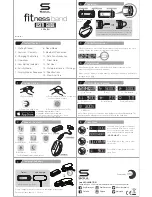
Disk Mode
Importing and Exporting Data using Standard File Formats
13-65
MS-DOS File System Compatibility
The K2vx is compatible with Þxed and removable disk drives that use the MS-DOS hard disk
and ßoppy disk formats. If you want to use this feature,
you must Þrst format the disk media
on a computer
such as a PC compatible or a Mac running appropriate MS-DOS conversion
software.
The MS-DOS hard disk format is structured so that the disk can be split up into multiple
partitions.
The K2vx can only use the Þrst partition that it Þnds on the disk
. Therefore, it is
usually best to format the media with only one partition taking up all usable space on the disk.
Working from the K2vx front-panel with an MS-DOS formatted drive will appear the same as
working with a drive that has been formatted with the K2vx's own Format function (on the
Disk Mode page.) The Free utility (Disk Mode->Util->Free) can be used to identify whether a
disk is DOS format or standard K2vx format. If the "DOS" indicator is displayed, it means the
K2vx has determined that the disk is a DOS format hard drive with at least one primary DOS
partition. Floppy disks will not display the DOS message.
Some advantages of working with an MS-DOS compatible drive format over the standard K2vx
format are:
•
easier sharing of K2vx Þles with other users over computer communications lines,
•
being able to use graphical Þle management interfaces for organizing Þles and directories,
•
being able to back up K2vx data using a PC compatible or Mac with commercially
available software, and
•
easier transfer of data using standard Þle formats such as AIFF, WAVE, and MIDI Type 0,
for importing and exporting samples and sequences.
File Name Compatibility
DOS format does not support space characters in Þle names
. The K2vx, though, allows
spaces to be used within Þle names. If you plan to transfer Þles between the K2vx and a DOS
compatible computer, it is recommended that you use only Þle names without space characters
in them. Otherwise, a computer may have trouble identifying the Þles.
Importing and Exporting Data using Standard File Formats
The K2vx supports three common data interchange Þle formats, Apple Interchange File Format
(AIFF), Microsoft RIFF WAVE, and MIDI Type 0. The Þrst two are used to transfer sample data,
and the latter is used for sequences.
The K2vx can recognize these Þle types automatically on loading, regardless of the Þle
extension. You can load these Þles as you would any standard K2vx Þle, and also as part of a
Macro Þle load. The most recent sample Þle loaded will become the "preview" sample, which
means you can quickly access it for playing or editing on the Sample page (
MASTER-
>Sample)
. Similarly, the most recent MIDI Type 0 Þle loaded in will become the current song on
the Song Mode page.
You can save Þles in these formats on the
Export
page. This page is accessible from the Disk
Mode page by pressing
Save->Export
.
Содержание K2500RS
Страница 12: ...Table of Contents TOC 12...
Страница 16: ...Introduction How to use this manual 1 4...
Страница 32: ...User Interface Basics The Panel Play Feature K2vxR 3 8...
Страница 106: ...Effects Mode and the Effects Editor Configurations and Parameters 9 24...
Страница 186: ...Song Mode Recording Multi timbral Sequences via MIDI 12 52...
Страница 304: ...DSP Functions Hard Sync Functions 14 52...
Страница 394: ...Programs Setups and Keymaps K2500 ROM Keymaps 21 12...
Страница 402: ...LFOs LFO Shapes 23 4...
Страница 406: ...Note Numbers and Intonation Tables List and Description of Intonation Tables 24 4...
Страница 434: ...DSP Algorithms 26 14...
Страница 450: ...MIDI and SCSI Sample Dumps SMDI Sample Transfers 29 8...
Страница 464: ...Glossary 31 6...
Страница 490: ...K2vx Program Farm VOX K25 Appendix A 22...
Страница 494: ...K2vx Compatibility Converting programs from the K2vx to K2000 Appendix B 4...
















































